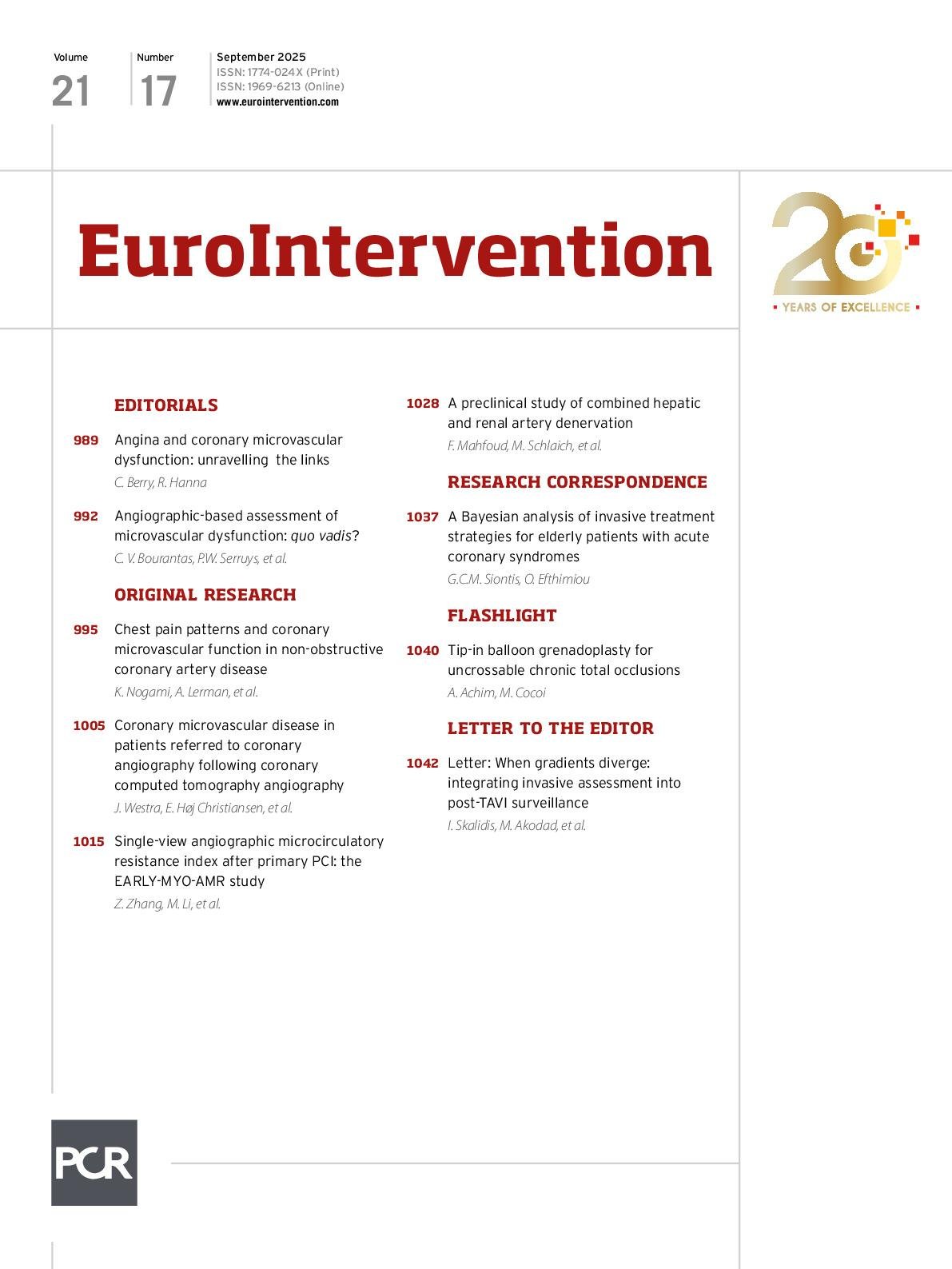Abstract
Background: Coronary microvascular dysfunction (CMD) is a common cause of chest pain (CP) in patients with angina and non-obstructive coronary arteries (ANOCA). Although both CMD and CP have distinct classifications, the relationship between them remains insufficiently understood.
Aims: This study investigated the relationship between CMD and CP patterns and their prognostic impact in ANOCA patients.
Methods: Serial patients with ANOCA who underwent coronary reactivity testing were enrolled. CP patterns were categorised as exertional, resting, or both. Endothelium-dependent CMD was defined as a <50% change in coronary blood flow (CBF) with intracoronary acetylcholine infusion and endothelium-independent CMD as a coronary flow reserve (CFR) <2.5 during adenosine-induced hyperaemia. Microvascular function and prognosis were compared between patients with exertional CP and resting CP.
Results: Among 1,264 patients, the median age was 52 years, and 65.3% were women; 23.7% had exertional CP, 27.0% resting CP, and 49.4% both. Exertional CP patients had a lower CFR and a higher prevalence of endothelium-independent CMD compared to resting CP patients (2.8 vs 3.0; p=0.014, 32.1% vs 24.4%; p=0.034). Exertional CP patients showed a significantly lower CBF increase in response to acetylcholine (38.2% vs 50.7%; p=0.015). Survival analysis over a median 7-year follow-up revealed that endothelium-independent CMD significantly increased risk in exertional CP patients (p=0.002) but not in resting CP patients (p=0.388).
Conclusions: ANOCA patients with exertional CP demonstrated worse microvascular function than those with resting CP, with endothelium-independent CMD showing a significant prognostic impact. Exertional CP patients may benefit more from treatment strategies specifically targeting CMD.
Sign up for free!
Join us for free and access thousands of articles from EuroIntervention, as well as presentations, videos, cases from PCRonline.com

